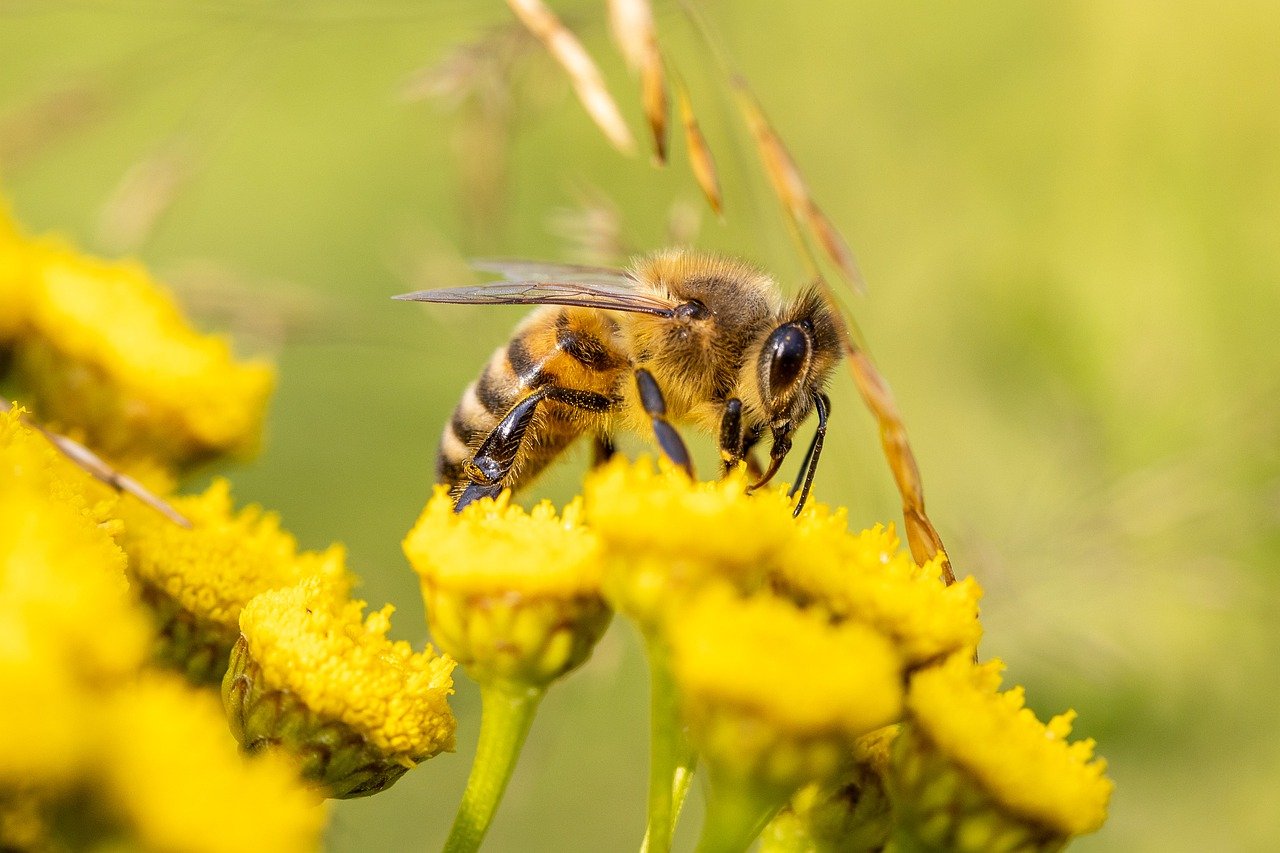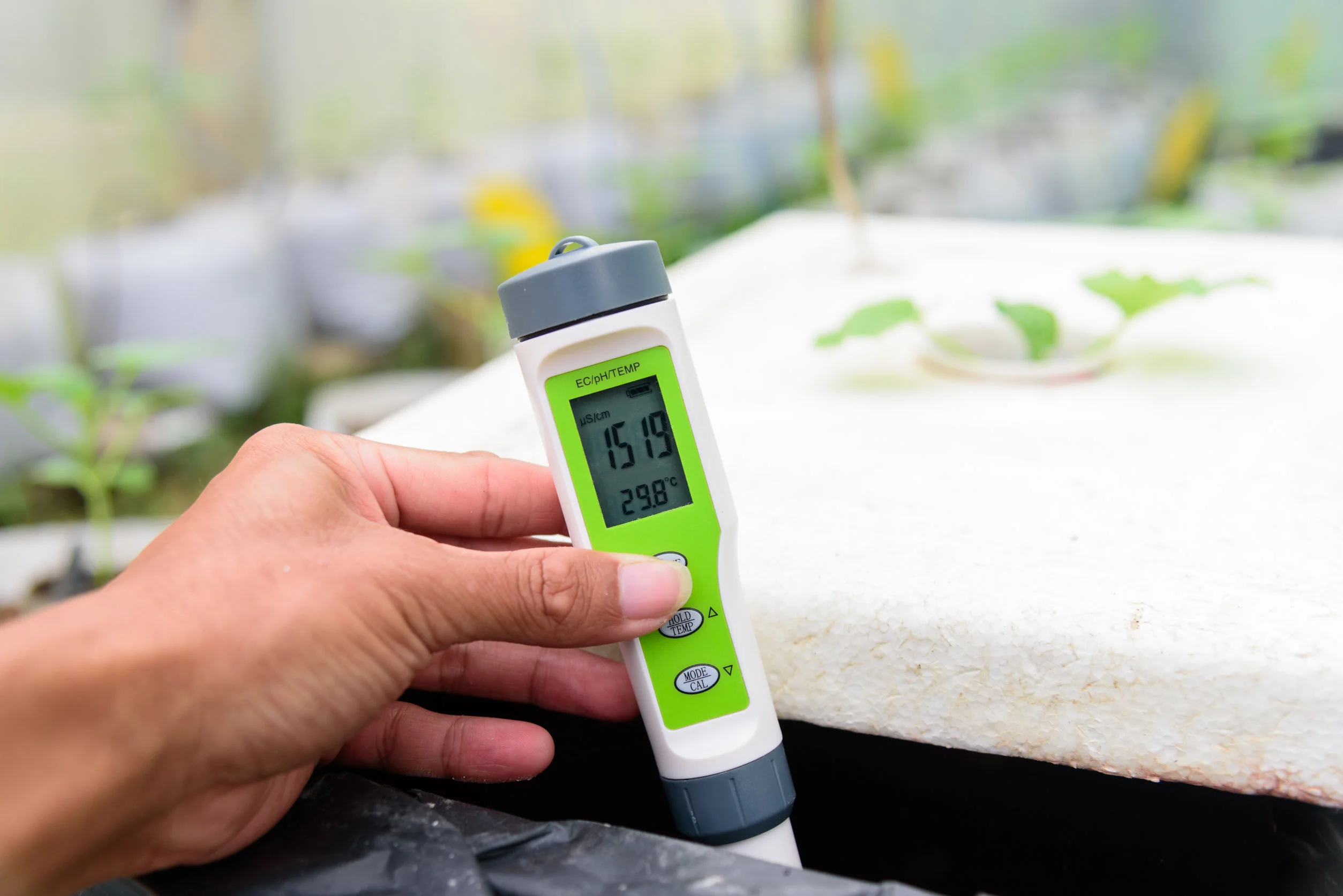Home>Gardening Basics>Understanding Soil>Why Is Soil So Important


Understanding Soil
Why Is Soil So Important
Modified: February 10, 2024
Understanding Soil: Uncover the vital role that soil plays in our ecosystem and discover why it is crucial for sustaining life on our planet.
(Many of the links in this article redirect to a specific reviewed product. Your purchase of these products through affiliate links helps to generate commission for Chicagolandgardening.com, at no extra cost. Learn more)
Table of Contents
- Introduction
- Importance of Soil for Plant Growth
- Soil Composition and Nutrient Availability
- Soil as a Habitat for Organisms
- Soil Conservation and Erosion Prevention
- Role of Soil in Water Regulation
- Soil as a Carbon Sink and Climate Buffer
- Importance of Soil in Agriculture and Food Security
- Soil and Human Health
- Conclusion
Introduction
Welcome to the fascinating world of soil! While it may seem like just dirt beneath our feet, soil plays a crucial role in the health and well-being of our planet. From supporting plant growth to regulating water and climate, soil is a complex and valuable resource that deserves our attention and appreciation.
Soil is the foundation of life on Earth. It provides a nourishing environment for plants to grow and flourish, serving as a reservoir for essential nutrients and water. Without fertile soil, we wouldn’t have the abundance of food that sustains us.
But soil is more than just a medium for growing crops. It is a living, dynamic ecosystem that houses a wide variety of organisms, from microscopic bacteria and fungi to earthworms and insects. These organisms help break down organic matter, release nutrients, and improve soil structure, making it more conducive to plant growth.
Soil also plays a crucial role in water regulation. Healthy soil acts like a sponge, absorbing rainfall and gradually releasing it back into the environment. This helps prevent floods and droughts, and also filters and cleans the water, reducing the risk of pollution.
Furthermore, soil has the incredible ability to store carbon and mitigate climate change. As plants grow, they absorb carbon dioxide from the atmosphere and store it in the soil. This carbon sequestration helps to reduce the concentration of greenhouse gases in the atmosphere, slowing down the pace of global warming.
Agriculture, too, heavily relies on soil. Farmers depend on fertile soil to grow the crops that feed the world’s growing population. However, unsustainable farming practices, such as excessive use of synthetic fertilizers and pesticides, have led to soil degradation and erosion, posing a serious threat to food security.
Lastly, soil impacts human health in more ways than we realize. It serves as a natural filter, removing pollutants and contaminants from water and preventing them from entering the food chain. Additionally, spending time in nature and working with soil has been shown to have positive effects on mental health and overall well-being.
In this article, we will delve deeper into the importance of soil for plant growth, its composition and nutrient availability, its role as a habitat for organisms, soil conservation and erosion prevention measures, its impact on water regulation, carbon sequestration, and climate buffering, its significance in agriculture and food security, and its implications for human health. So, let’s dig into the fascinating world beneath our feet and discover why soil matters.
Importance of Soil for Plant Growth
Soil is the foundation of plant life. It provides essential nutrients, water, and support that plants need to thrive. Without healthy soil, plants would struggle to survive and our world would be devoid of lush greenery and bountiful harvests.
One of the key reasons soil is crucial for plant growth is its ability to hold and release water. Soil acts as a reservoir, soaking up rain and irrigation water and gradually releasing it to the roots of plants. This ensures that plants have a constant supply of water, even during dry periods, preventing dehydration and maintaining their turgidity.
Furthermore, soil is a rich source of nutrients essential for plant growth. It provides a diverse array of minerals, such as nitrogen, phosphorus, and potassium, which are vital for the development of leaves, roots, and flowers. Soil also contains micronutrients, like iron, zinc, and manganese, which play a critical role in various biochemical processes within plants.
The availability of these nutrients is influenced by the soil composition and its pH level. Different plants have specific nutrient requirements, and soil conditions must be well-suited to meet those needs. For example, acidic soil is favored by blueberries, while alkaline soil is better for asparagus. Understanding the soil composition and pH is essential for selecting the right plants and optimizing their growth.
Moreover, soil provides physical support for plants. It anchors the roots in place, allowing them to establish a strong foundation and withstand external forces like wind and rainfall. The structure of the soil, influenced by factors such as organic matter content and particle size, determines its ability to retain water and provide aeration to the roots.
In addition to these direct benefits, soil also plays a role in supporting beneficial microbial activity. The rhizosphere, the region surrounding the plant roots, is a hotspot for microbial communities. These microorganisms break down organic matter, release nutrients, and protect plants from disease-causing pathogens. The symbiotic relationship between plants and soil microorganisms is vital for a healthy and productive ecosystem.
Overall, soil is an irreplaceable resource for plant growth. Its ability to retain and release water, provide essential nutrients, and offer physical support to plants is essential for their survival and productivity. By understanding the importance of soil and implementing sustainable soil management practices, we can ensure the continued growth of healthy plants and a thriving ecosystem.
Soil Composition and Nutrient Availability
Soil is a complex mixture of minerals, organic matter, water, air, and living organisms. Understanding the composition of soil is crucial for assessing its fertility and nutrient availability, which directly impact plant growth and productivity.
The mineral component of soil primarily consists of weathered rock particles, classified based on their size. These particles are categorized into three main groups: sand, silt, and clay. Sand has the largest particles, providing good drainage but lacking water and nutrient retention. Silt has medium-sized particles, offering moderate water and nutrient retention. Clay has the smallest particles, providing excellent water and nutrient retention but often leading to poor drainage.
In addition to minerals, organic matter is a key component of soil. It is derived from decaying plant and animal material, enriching the soil with essential nutrients and improving its structure. Organic matter enhances soil fertility by releasing nitrogen, phosphorus, potassium, and other micronutrients as it decomposes. It also enhances the soil’s ability to retain water, promote root growth, and support beneficial microbial activity.
The decomposition of organic matter is facilitated by soil microorganisms, such as bacteria, fungi, and earthworms. These organisms break down complex organic compounds into simpler forms that can be readily absorbed by plants. They also contribute to the formation of humus, a stable organic substance that acts as a long-term source of nutrients for plants.
The availability of nutrients in the soil is influenced by various factors, including pH, cation exchange capacity (CEC), and nutrient-fixing capabilities. The pH level of the soil determines its acidity or alkalinity and affects the availability of certain nutrients. Most plants prefer a slightly acidic to neutral pH range for optimal nutrient uptake.
The CEC of soil refers to its ability to retain and release cations, positively charged ions, such as calcium, magnesium, potassium, and ammonium. Soils with a higher CEC can hold more nutrients, making them more fertile and capable of supporting plant growth. Additionally, some soils contain compounds or microorganisms capable of fixing atmospheric nitrogen, converting it into a form that plants can utilize.
Nutrient availability in the soil can be further influenced by factors such as soil moisture, temperature, and biological activity. Dry soil or extreme temperatures can limit nutrient uptake, while excessive rainfall or irrigation can lead to nutrient leaching, where nutrients are washed away from the root zone. Proper irrigation and fertilization practices are essential for maintaining nutrient balance in the soil.
Understanding the composition of soil and its nutrient availability is crucial for sustainable agriculture and gardening practices. By assessing the soil’s pH, organic matter content, nutrient levels, and other factors, farmers and gardeners can make informed decisions about soil amendments, fertilizer application, and crop selection to optimize plant growth and yield.
Soil as a Habitat for Organisms
Underneath the surface of the Earth lies a vibrant and diverse ecosystem teeming with life – the soil. Soil is not just a mixture of minerals and organic matter; it also serves as a habitat for countless microorganisms, insects, worms, and other organisms that play essential roles in soil health and ecosystem functioning.
Microorganisms, such as bacteria, fungi, and archaea, are abundant in soil. They contribute to various vital processes, including nutrient cycling, organic matter decomposition, and disease suppression. Bacteria, for example, break down complex organic compounds and release nutrients, making them available to plants. Fungi form symbiotic relationships with plant roots, forming mycorrhizae that enhance nutrient uptake and help plants withstand environmental stresses.
Earthworms, often considered “ecosystem engineers,” are another important component of the soil habitat. They burrow through the soil, creating channels that improve soil structure, enhance water infiltration, and promote aeration. Earthworms also digest organic matter, breaking it down into nutrient-rich castings that enrich the soil and promote plant growth.
In addition to microorganisms and earthworms, a diverse array of insects, mites, and other invertebrates call the soil their home. These organisms perform vital ecological functions, such as pollination, nutrient recycling, and pest control. For example, predatory insects in the soil feed on plant pests, helping to keep their populations in check and reducing the need for chemical pesticides.
The soil habitat is a complex web of interactions and relationships. Organisms in the soil form intricate food chains and webs, where energy and nutrients are transferred from one organism to another. These interactions contribute to the overall stability and functioning of ecosystems.
Soil organisms also contribute to the formation of soil aggregates, which are small, clumped particles that improve soil structure. These aggregates provide pore spaces in the soil, allowing for better water infiltration and root penetration. They also help to prevent soil erosion and promote the distribution of nutrients and oxygen throughout the soil profile.
However, human activities, such as excessive use of chemicals and intensive tillage, can disrupt the delicate balance of the soil habitat. Pesticides and fertilizers can harm beneficial organisms, leading to imbalances in the soil ecosystem. Therefore, it is essential to adopt sustainable soil management practices that protect and promote the diversity of soil organisms.
By recognizing the importance of soil as a habitat for organisms and understanding their roles in soil health and ecosystem functioning, we can develop strategies to conserve and enhance this vital ecosystem. Through practices such as organic farming, cover cropping, and reduced tillage, we can create a soil environment that supports a rich and diverse community of organisms, leading to healthier soils, improved plant growth, and more sustainable agricultural systems.
Soil Conservation and Erosion Prevention
Soil is a precious resource that forms at a very slow rate, taking thousands of years to develop. Unfortunately, it can be lost much more quickly through erosion, a process where soil particles are washed or blown away. Soil erosion poses a significant threat to agricultural productivity, water quality, and overall ecosystem health. Therefore, it is essential to implement soil conservation measures to prevent erosion and preserve this valuable resource.
One of the most effective strategies for preventing soil erosion is the use of conservation tillage practices. Traditional tillage, which involves turning over the soil with plows, exposes the soil to wind and water erosion. Conservation tillage techniques, on the other hand, minimize soil disturbance by leaving crop residue on the soil surface or strategically placing it in furrows. This helps to protect the soil from erosion, maintain soil structure, and improve organic matter content.
Implementing contour plowing and terracing is another effective method to prevent soil erosion on slopes. By plowing along the contour lines of the land or creating terraces, the flow of water down the slope is slowed, allowing more time for infiltration and reducing the erosive force of runoff. These techniques preserve the integrity of the soil, prevent soil loss, and minimize the formation of gullies.
Cover cropping is a valuable soil conservation practice that involves growing vegetation on bare soil during fallow periods. This helps to protect the soil surface from erosion by reducing the impact of raindrops and wind, increasing water infiltration, and improving soil structure. Cover crops also contribute to soil health by adding organic matter, increasing nutrient cycling, and suppressing weeds.
Planting windbreaks and hedgerows is another effective means of soil conservation, particularly in areas prone to wind erosion. These barriers of trees, shrubs, or grasses help to break the force of the wind, reducing the wind speed near the soil surface and preventing soil particles from being carried away. Windbreaks also provide other benefits such as wildlife habitat, microclimate moderation, and aesthetic appeal.
Controlling water runoff is a crucial aspect of soil erosion prevention. Installing vegetative buffer strips along streams, rivers, and drainage ditches can effectively trap sediment and filter runoff water, preventing soil particles from entering water bodies. Additionally, maintaining proper drainage systems, such as grassed waterways and sediment basins, can help redirect runoff and prevent erosion in areas prone to excessive water flow.
Education and awareness about the importance of soil conservation are also key to promoting sustainable land management practices. Teaching farmers, landowners, and the general public about the consequences of soil erosion and the benefits of soil conservation techniques can encourage their adoption and support long-term soil health.
By implementing these soil conservation and erosion prevention measures, we can protect our soils from degradation and ensure their long-term sustainability. Preserving the integrity of our soils not only benefits agriculture, but also contributes to water quality, biodiversity, and overall environmental resilience.
Role of Soil in Water Regulation
Soil plays a critical role in regulating water movement and availability, which is vital for the functioning of ecosystems and the sustainability of human societies. As a natural reservoir, soil helps to moderate the flow of water, prevent flooding, replenish groundwater, and support the growth of plants.
One of the key functions of soil in water regulation is its ability to absorb and store rainfall. When rainwater reaches the soil surface, it is either infiltrated into the soil or runs off. The capacity of soil to absorb water depends on its structure, texture, and organic matter content. Soils with good aggregation and high organic matter content can rapidly absorb water, reducing the risk of surface runoff and flooding.
In addition to infiltration, soil also plays a crucial role in retaining water within its pores. Water held within the soil profile is referred to as soil moisture. This soil moisture is available for plant uptake, helping to sustain plant growth during dry periods. The ability of soil to store moisture depends on its texture and organic matter content. Soils with higher clay and organic matter content can retain more water, providing a buffer against drought conditions.
Moreover, soil acts as a filter, removing pollutants and contaminants from water as it passes through. As water percolates through the soil, physical, chemical, and biological processes take place that help to remove sediments, nutrients, chemicals, and microorganisms that can be harmful to aquatic ecosystems. This natural filtration process helps to improve water quality and ensure the availability of clean water for human consumption and ecological health.
The role of soil in regulating water movement extends to the replenishment of groundwater. When rainwater infiltrates the soil and fills the spaces between soil particles, it becomes part of the groundwater recharge process. Groundwater contributes to the supply of freshwater for wells, springs, and streams, serving as an essential resource for irrigation, drinking water, and sustaining aquatic habitats.
Furthermore, healthy soil supports plant roots and facilitates their access to water. Soil acts as a reservoir, holding water that plants can extract through their root systems. The root systems of plants also contribute to the formation of macropores in the soil, enhancing water movement and infiltration. The presence of vegetation, such as grasslands and forests, helps to stabilize soil structure, reduce erosion, and promote water infiltration, reducing the risk of runoff and flooding.
In summary, soil plays a crucial role in water regulation by absorbing and storing rainfall, retaining soil moisture for plant uptake, acting as a natural filter, replenishing groundwater, and supporting vegetation. Through the intricate balance of water infiltration, retention, and movement, soil helps to prevent floods, sustain plant growth, improve water quality, and maintain the overall health and resilience of both terrestrial and aquatic ecosystems.
Soil as a Carbon Sink and Climate Buffer
Soil is not only essential for sustaining plant life but also plays a crucial role in mitigating climate change. It acts as a vital carbon sink, storing carbon dioxide from the atmosphere and helping to offset the impacts of greenhouse gas emissions. Additionally, soil serves as a climate buffer, influencing temperature regulation and supporting ecosystem resilience.
When plants photosynthesize, they absorb carbon dioxide from the atmosphere and convert it into organic matter through the process of photosynthesis. Some of this organic matter is then transferred to the soil through the decomposition of plant material and root exudates. Once in the soil, organic matter can persist for years to centuries, effectively sequestering carbon from the atmosphere.
Soils with high levels of organic matter content, such as those rich in humus, tend to have higher carbon storage capacity. These soils are often found in natural ecosystems like forests and grasslands, but can also be promoted through sustainable agricultural practices such as cover cropping, composting, and reduced tillage. By increasing soil organic matter content and promoting carbon sequestration, we can enhance the role of soil as a carbon sink.
Soil acts as a climate buffer by influencing temperature regulation. Dark-colored soils, known as “black carbon” or “charcoal,” have high heat absorption capabilities and can amplify the warming effect of sunlight. Conversely, light-colored soils, like sandy soils, reflect more light and heat, reducing the overall temperature. The extent of this climate buffering effect depends on soil type, land cover, and regional climate patterns.
Furthermore, healthy soils play a crucial role in ecosystem resilience and adaptation to climate change. They enhance water retention capacity, reducing the risk of drought stress and water scarcity for vegetation. Soil structure and organic matter content also improve the infiltration and storage of water, helping to mitigate the impacts of extreme rainfall events. This resilience is vital for maintaining ecosystem productivity and supporting food security in the face of a changing climate.
However, human activities, such as deforestation, intensive agriculture, and improper land management, can result in soil degradation and carbon loss. Practices like excessive tillage, overuse of synthetic fertilizers, and monoculture crop production can deplete soil organic matter and release stored carbon into the atmosphere. This exacerbates climate change and weakens the capacity of soils to function as carbon sinks and climate buffers.
Addressing soil degradation and promoting sustainable land management practices are essential for harnessing the full potential of soil as a carbon sink and climate buffer. By adopting practices that promote organic matter accumulation, reduce soil erosion, and enhance soil fertility, we can strengthen the ability of soils to sequester carbon and mitigate the impacts of climate change. Sustainable farming practices, reforestation efforts, and land restoration initiatives can all contribute to preserving and enhancing the climate-regulating functions of soil.
Importance of Soil in Agriculture and Food Security
Soil is the fundamental resource that supports agriculture and ensures global food security. It provides a hospitable environment for plant growth, supplies essential nutrients, and contributes to the overall productivity and resilience of farming systems.
One of the primary ways soil is critical to agriculture is by serving as a medium for plant growth. Soil provides physical support for plant roots, enabling them to anchor firmly and access vital resources like water and nutrients. The soil’s structure, texture, and composition determine its ability to retain moisture and nutrients, creating favorable conditions for plant growth.
Furthermore, soil functions as a reservoir for essential nutrients necessary for plant development. It contains a vast array of nutrients, including nitrogen, phosphorus, potassium, and micronutrients, which are essential for crop growth and yield. As plants extract these nutrients from the soil, they play a vital role in nourishing people and animals, thus contributing to food security.
Soil fertility is crucial in ensuring agricultural productivity and food availability. Fertile soil supports healthy plant growth, leading to higher crop yields and better-quality produce. Through sustainable soil management practices like crop rotation, cover cropping, and organic amendments, farmers can maintain and improve soil fertility, resulting in sustainable agricultural systems.
In addition to providing physical support and nutrients, soil also supports beneficial microbial activity. The rhizosphere, the region around plant roots, is a hotbed of microbial interactions that contribute to plant health and nutrient cycling. Soil microorganisms assist in nutrient decomposition and release, enhance plant disease suppression, and improve soil structure, contributing to long-term soil fertility and productivity.
However, soil degradation poses a significant threat to agriculture and food security. Unsustainable land management practices, such as deforestation, overuse of chemical fertilizers and pesticides, improper irrigation, and soil erosion, decrease soil fertility and compromise its ability to support farming systems. This degradation leads to reduced yields, increased vulnerability to pests and diseases, and diminished food production capacity.
Promoting sustainable soil management practices is the key to preserving soil fertility and ensuring long-term agricultural productivity. By adopting techniques such as conservation tillage, crop rotation, agroforestry, and organic farming, farmers can minimize soil erosion, improve soil structure, and enhance nutrient management. These practices not only protect the soil but also contribute to climate change mitigation and the conservation of biodiversity.
Throughout history, civilizations that have failed to manage soil resources have experienced food shortages and societal collapse. Recognizing the importance of soil in agriculture and food security, we must prioritize sustainable land management practices and invest in soil conservation efforts. By protecting and enhancing the health of our soils, we can ensure the long-term viability of our agricultural systems and pave the way for a more sustainable and food-secure future.
Soil and Human Health
Soil not only supports plant growth and agricultural systems but also plays a vital role in human health. The quality of the soil directly influences the quality of the food we consume, while spending time in nature and working with soil has been shown to have positive effects on our mental and physical well-being.
The nutritional quality of the food we eat is closely tied to the health of the soil in which it is grown. Healthy soils, rich in organic matter and abundant in beneficial microbes, produce nutrient-rich crops. These crops provide essential vitamins, minerals, and antioxidants necessary for our overall health and well-being. Conversely, soils depleted of nutrients and contaminated with pollutants may result in less nutritious and potentially harmful food.
Soil also acts as a natural filter, purifying water and preventing the contamination of our water resources. As rainwater infiltrates the soil, it is filtered and cleansed, removing impurities, pollutants, and pathogens. This protects drinking water sources and helps to ensure the availability of clean water for human consumption, safeguarding our health and preventing water-related diseases.
Moreover, spending time in nature and engaging in activities that involve soil, such as gardening or farming, have been shown to have numerous health benefits. Contact with soil has been linked to improved mental well-being, stress reduction, and enhanced mood. The presence of beneficial bacteria in the soil may stimulate the production of serotonin, a neurotransmitter that plays a role in regulating mood and promoting feelings of happiness. Gardening and other outdoor activities also provide opportunities for physical exercise, fostering a healthy lifestyle.
Additionally, working with soil can boost our immune systems. Exposure to diverse microorganisms in the soil, particularly in organic and naturalized environments, may strengthen our immune responses and reduce the risk of allergies and autoimmune diseases. This “hygiene hypothesis” suggests that exposing ourselves to a variety of microbes, including those found in the soil, can help develop a more robust and balanced immune system.
However, it is important to consider potential risks associated with soil contamination. Industrial activities, improper waste disposal, and the use of chemicals and pollutants in agricultural practices can contaminate soils with heavy metals, pesticides, and other harmful substances. Regular monitoring and proper soil management practices are crucial to minimize these risks and ensure soil safety for human health.
By recognizing the connection between soil and human health, we can make informed choices about the food we consume and engage in activities that promote well-being. Protecting and preserving soil quality, promoting sustainable farming practices, and encouraging access to green spaces can contribute to healthier communities and a more sustainable, harmonious relationship between humans and the soil that sustains us.
Conclusion
Soil is a remarkable and invaluable resource that plays a multifaceted role in supporting life on Earth. It is the foundation for plant growth, the home for a vast array of organisms, a regulator of water and climate, and a critical component for agriculture and food security. Additionally, soil has a profound impact on human health and well-being.
The importance of soil in plant growth cannot be overstated. It provides essential nutrients, water, and physical support for plants, enabling them to thrive and produce the food we rely on. Soil composition and nutrient availability directly influence crop productivity and the nutritional quality of our food.
Furthermore, soil acts as a habitat for a diverse range of organisms, from microorganisms to earthworms, contributing to nutrient cycling, organic matter decomposition, and disease suppression. The interactions between soil and organisms are vital for maintaining a healthy and productive ecosystem.
The role of soil in water regulation is critical for preventing floods, replenishing groundwater, and serving as a natural filter to improve water quality. Sustainable soil management practices can enhance water infiltration, reduce runoff, and promote efficient water use in agriculture.
Soil also acts as a carbon sink and climate buffer, sequestering carbon dioxide from the atmosphere and regulating temperature. Preserving soil health and promoting sustainable land management practices are essential for mitigating climate change impacts and enhancing ecosystem resilience.
In agriculture, soil fertility is a key determinant of crop productivity and food security. Sustainable soil management practices, such as organic farming, conservation tillage, and crop rotation, are crucial for preserving soil fertility and ensuring long-term agricultural sustainability.
Lastly, soil contributes to human health and well-being through the nutrients it provides in our food, the purification of water resources, and the positive effects on mental and physical health from activities involving soil.
In conclusion, soil is a vital and intricate component of our planet’s ecosystem. Recognizing its importance and implementing sustainable soil management practices is crucial for maintaining soil health, preserving biodiversity, mitigating climate change, and ensuring the long-term sustainability of our agricultural systems and food security. Let us treasure and protect this invaluable resource to create a more resilient and thriving planet for generations to come.






